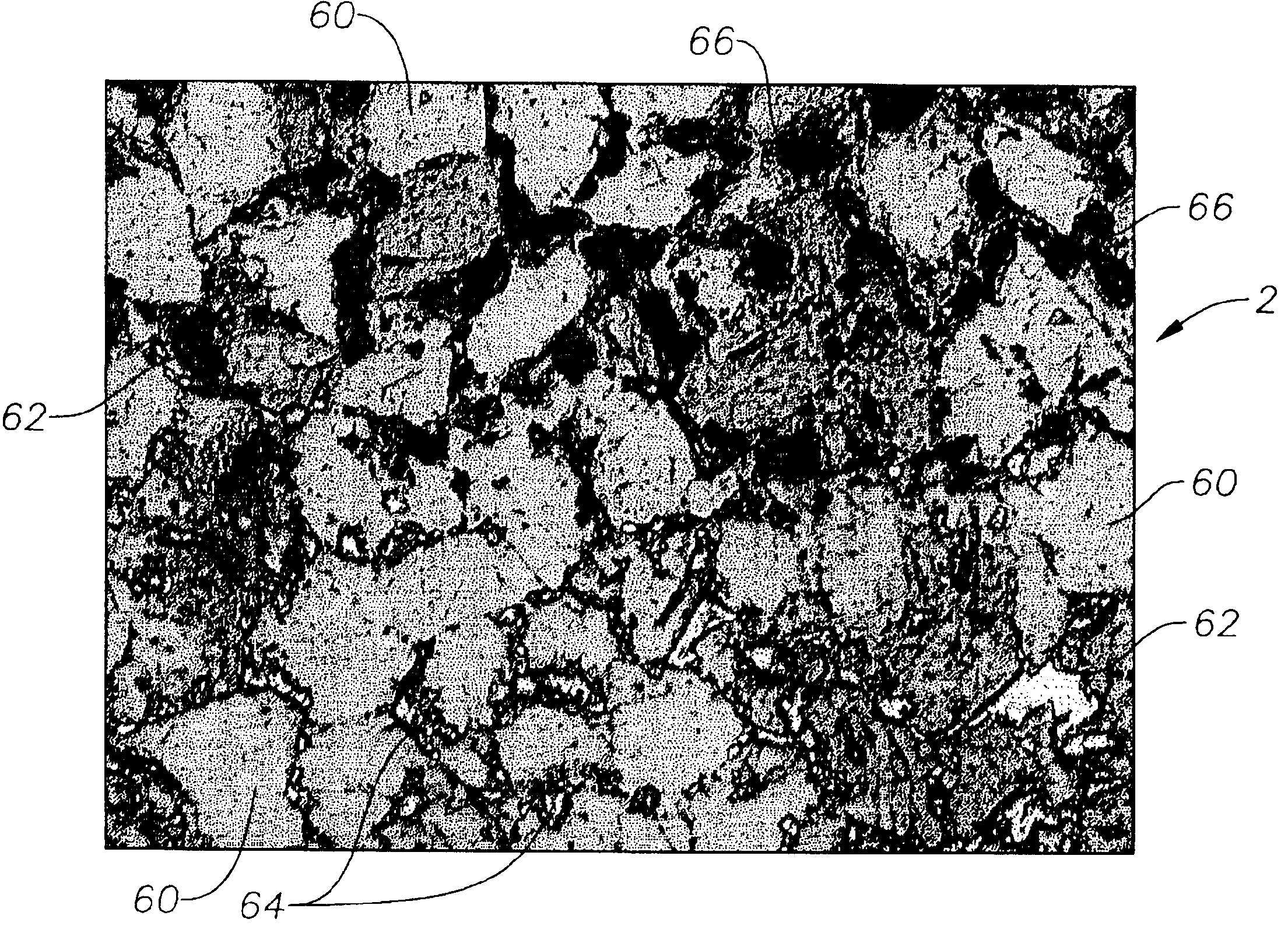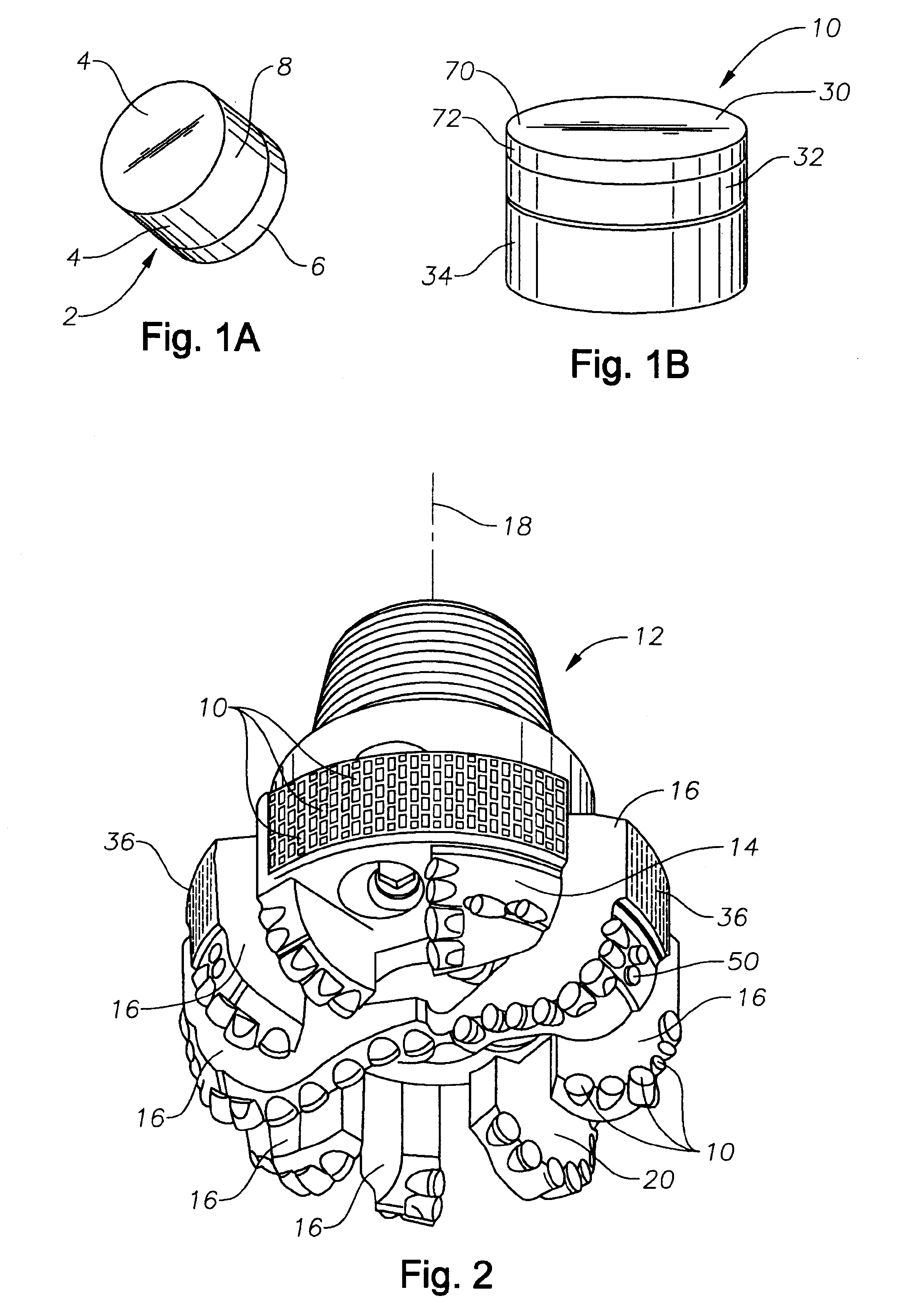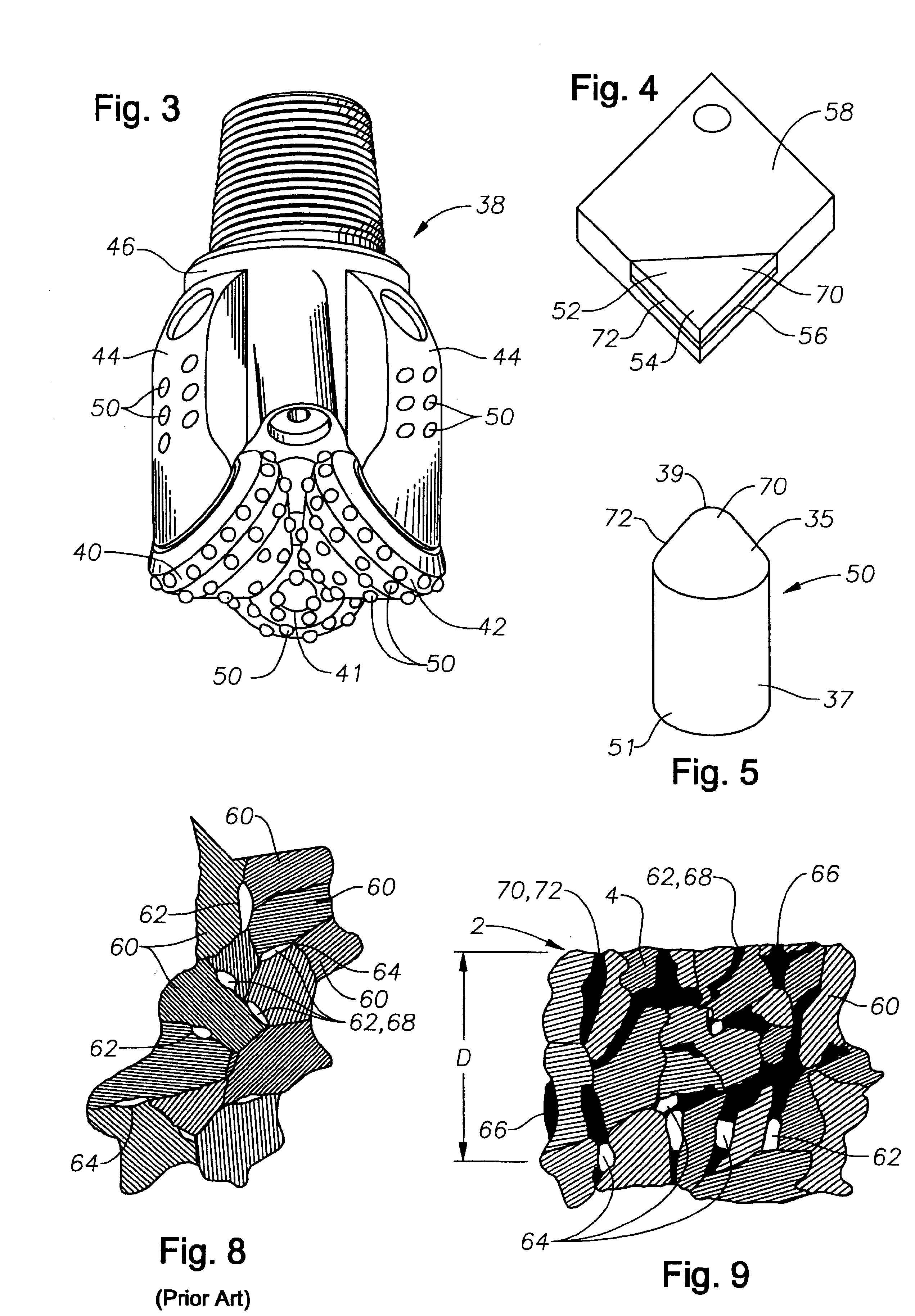High volume density polycrystalline diamond with working surfaces depleted of catalyzing material
a high-volume density, diamond-like technology, applied in the field of super-hard polycrystalline material elements, can solve the problems of reducing the useful life of pdc elements, affecting the performance of pdc elements used in drilling applications, and imposing a limit on the maximum useful operating temperature of the element, so as to achieve the effect of improving the wear resistan
- Summary
- Abstract
- Description
- Claims
- Application Information
AI Technical Summary
Benefits of technology
Problems solved by technology
Method used
Image
Examples
Embodiment Construction
The polycrystalline diamond or diamond-like material (PCD) element 2 of the present invention is shown in FIG. 1A. The PCD element 2 has a plurality of partially bonded superhard, diamond or diamond-like, crystals 60, (shown in FIGS. 7 and 9) a catalyzing material 64, and an interstitial matrix 68 formed by the interstices 62 among the crystals 60. The element 2 also has one or more working surfaces 4 and the diamond crystals 60 and the interstices 62 form the volume of the body 8 of the PCD element 2. Preferably, the element 2 is integrally formed with a metallic substrate 6, typically tungsten carbide with a cobalt binder material. To be effective when used in an abrasive wear application, the volume density of the diamond in the body 8 must be greater than 85 volume %, and preferably be higher than 90%.
The working surface 4 is any portion of the PCD body 8 which, in operation, may contact the object to be worked. In this specification, when the working surface 4 is discussed, it ...
PUM
| Property | Measurement | Unit |
|---|---|---|
| Fraction | aaaaa | aaaaa |
| Thickness | aaaaa | aaaaa |
| Length | aaaaa | aaaaa |
Abstract
Description
Claims
Application Information
 Login to View More
Login to View More - R&D
- Intellectual Property
- Life Sciences
- Materials
- Tech Scout
- Unparalleled Data Quality
- Higher Quality Content
- 60% Fewer Hallucinations
Browse by: Latest US Patents, China's latest patents, Technical Efficacy Thesaurus, Application Domain, Technology Topic, Popular Technical Reports.
© 2025 PatSnap. All rights reserved.Legal|Privacy policy|Modern Slavery Act Transparency Statement|Sitemap|About US| Contact US: help@patsnap.com



